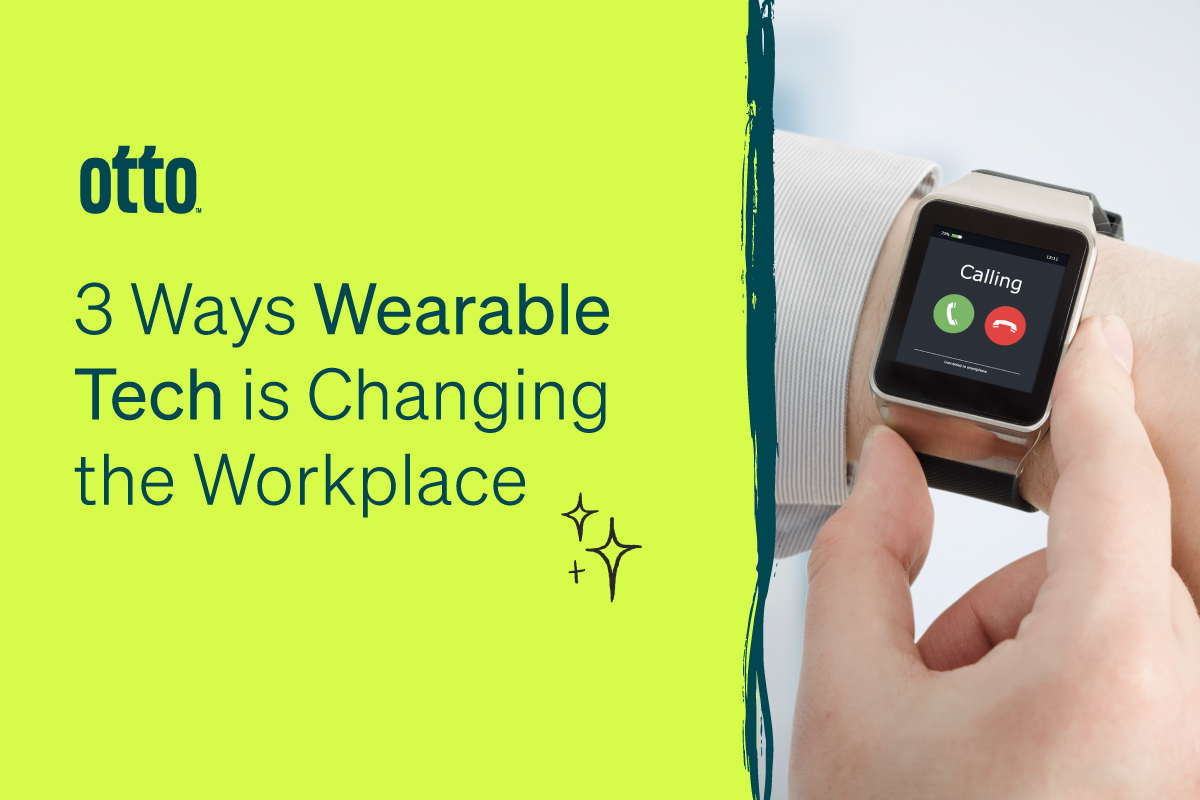From Fitbit and Apple watches to bespoke solutions, wearable technology is changing the workplace. For one thing, it’s much more affordable now, making it a great perk to supporting wellness in the workplace. It’s also critical for workplace safety, especially where there is a higher level of physical or mental risk – fire departments, factories, construction, and more. Here’s how wearable technology is making the workplace safer, healthier, and more productive.
#1 – Supporting health and higher productivity
Healthy employees are happier, more productive, and more engaged. They do more work and they do it better, are less likely to leave your organisation, and more likely to rise within it. So, where do wearables come in?
The digital platforms synched with wearable tech are incredibly advanced, easy to use, and insightful! They can help you track your eating habits and nutrition, your physical exercise and fitness levels, and even your sleep habits and blood pressure. When people have a clear idea of what’s impacting their health and how to change it, they’re empowered to support their mental and physical well-being, lower chronic disease risks and keep medical conditions in check. These apps have plenty of connected events, personal training sessions and nutritional programs to provide support – and the motivational aspects help keep you on the right track.
Apps we love include MyFitnessPal, Foodility, Nike Training Club, Down Dog, Glo, The 7-Minute Workout, and Nourishly.
#2 – Improving workplace safety
Some industries and spaces are naturally higher risk than others, and in addition to following good health and safety policies, wearable tech can add another new layer to protecting your employees.
At Audi , teams are running tests on an exoskeleton that would be used by factory workers. Because of the nature of their work, many teams in these factories have to spend a lot of time bending over machinery and car components. The 3kg exoskeleton covers their upper body to their thighs with a network of bionic structures and sensors that provide additional support to prevent back pain and injury.
At General Motors , NASA helped develop the RoboGlove for factory workers to both provide protection to hands and prevent repetitive strain injuries on assembly lines. For high-stress environments like the medical industry or emergency services, there’s the VivaLNK Vital Scout. This is a high-tech patch that monitors stress levels using ECG sensors to track heart rate over several days at a time. When abnormal stress levels are detected, new stress management techniques and strategies can be put into action.
#3 – Bringing people together
Even in the hybrid working age, your employees still need to be able to work together as a strong, effective team. Tech is the easiest and most effective way to build this connection, but we’re not just talking about chats on Teams or gaming competitions. Wearables help facilitate this too because of the interactivity, sharing, and group dimensions of the apps.
For example, say you make a fun competition for different teams to get the most steps in a month – walking, running, playing with the dog – however they want to do it. But they’re all over the city or even in other parts of Australia. On an app, you can set up the challenge, add people to a team, and their individual efforts are shared in a similar format to a social media newsfeed. Many apps allow chats to send cheers and encouragement, allow people in close locations to work out together, and keep track of results.
This gets everyone on the same team and helps motivate people to keep up with their personal fitness goals wherever they are and in whichever way they like to work out. They work just as well for beginners as pro athletes, and you can add fun prizes to keep everyone cheering each other on.
Otto – IT consulting specialists in Melbourne
Every business in any industry can benefit from wellness projects – it’s only a matter of finding projects your teams will love and that fit with your organisational goals. At Otto, we’ll help you put tech into action, from planning and implementing hybrid technology to providing 24/7 tech support and more. We’re also specialists in cybersecurity solutions and training, helping keep your data and people secure!



